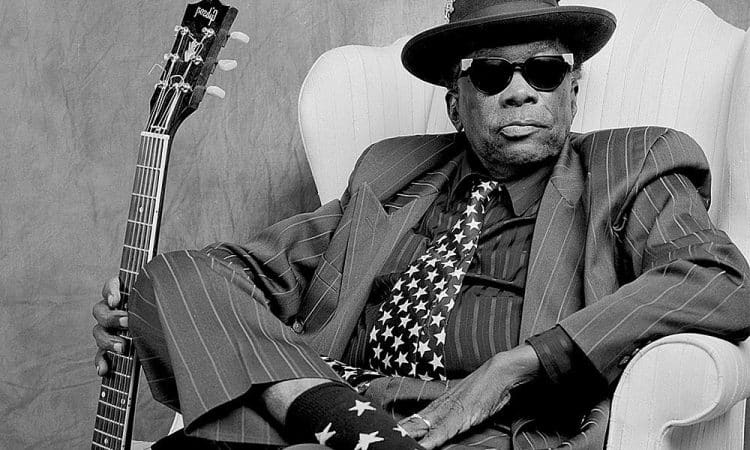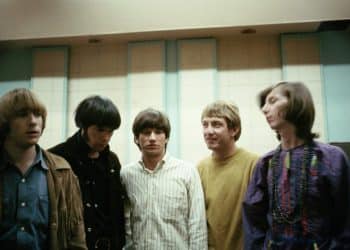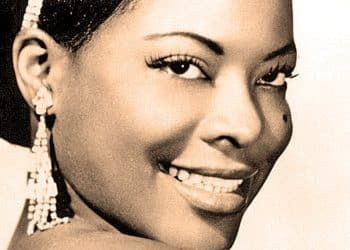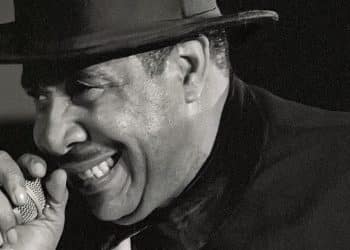Few artists have left a mark on music as profound as John Lee Hooker, the undisputed king of the boogie blues. With his deep, hypnotic voice and unmistakable guitar style, Hooker transcended genres and generations, influencing everyone from blues legends to rock icons. His music is raw, soulful, and deeply personal—a reflection of both his life and the universal human experience. Whether you’re a lifelong fan of the blues or a newcomer to its rich history, Hooker’s work offers a gateway into a world of rhythm, emotion, and storytelling unlike any other.
In this article, we dive into the top 10 most popular John Lee Hooker songs of all time—tracks that have stood the test of time and continue to resonate with listeners worldwide. From the pulsating grooves of “Boom Boom” to the haunting depths of “I’m in the Mood,” these songs showcase his ability to weave stories of love, longing, and resilience. Each track is a masterpiece that captures the essence of the blues while showcasing Hooker’s unmatched talent. So grab your headphones, prepare to tap your feet, and join us as we celebrate the most iconic moments from this legendary musician’s career!
1. Boom Boom (1962)
John Lee Hooker’s “Boom Boom” is an undeniable blues anthem, and its infectious rhythm has made it one of his most recognizable songs. Released in 1962, the track is a prime example of Hooker’s signature boogie-woogie style, combining his masterful guitar work with a catchy, pulsating groove that draws listeners in immediately. The song’s origins are rooted in an amusing personal experience Hooker had with a bartender who constantly teased him for being late, leading him to riff on the frustrations of tardiness and the unpredictable nature of time. This interaction inspired the playful, witty lyrics that humorously reflect the comical side of life. However, Hooker’s deep, soulful voice carries a level of sincerity and experience that speaks to a much broader emotional depth, making this song relatable to more than just the casual listener. The catchy riff in the song’s intro is instantly recognizable, and its infectious energy invites movement and rhythm. While its playful tone stands out, “Boom Boom” is also a reminder of the raw emotion and soulful craftsmanship that defines the blues genre. Hooker’s unique blend of rhythm, humor, and swagger made him one of the most influential blues artists of his time. The song’s crossover success helped elevate blues into mainstream recognition, reaching an audience beyond its traditional roots and solidifying Hooker’s place in music history as a trailblazer. To this day, “Boom Boom” remains a testament to Hooker’s mastery of rhythm and his ability to make music that speaks to both the heart and the feet, making it a timeless classic in the blues canon.
2. One Bourbon, One Scotch, One Beer (1953)
“One Bourbon, One Scotch, One Beer,” released by John Lee Hooker in 1953, stands as a powerful testament to the blues’ ability to weave tales of hardship, escape, and raw emotion. The track’s storyline follows a down-and-out narrator who seeks solace in a drink, delivering a relatable, soul-searching narrative about coping with life’s difficulties. Hooker’s delivery is deeply compelling, capturing the pain and frustration of a man trying to forget his troubles through alcohol. The rhythm of the song itself mirrors the narrator’s ebb and flow between drunken stupor and poignant reflection. Hooker’s approach to this song blends storytelling and songcraft, mixing spoken word and melody to emphasize the loneliness, heartache, and sense of inevitability that comes with hardship. His evocative voice serves as both a form of catharsis and a medium for his raw emotions, inviting listeners into the narrator’s world. The conversational tone of the lyrics makes the song feel like an intimate dialogue, connecting the listener directly with the narrator’s struggle. The song’s arrangement—built around steady rhythms and simple instrumentation—gives Hooker’s vocals room to breathe, allowing the focus to stay on his commanding delivery. While the song is undeniably filled with sorrow, there’s also an undercurrent of resilience, a sense that despite the narrator’s despair, he’s holding on to something—perhaps his last remaining bit of control. The track was so influential that it was later covered by numerous artists, with Hooker’s original version still considered the definitive take. It’s an enduring piece of blues history that continues to resonate with listeners who understand that the blues isn’t just about sorrow—it’s about facing life head-on with whatever tools you have at your disposal.
3. Boogie Chillen’ (1948)
John Lee Hooker’s “Boogie Chillen’,” released in 1948, is a cornerstone in the history of blues music. This track marked a pivotal moment in Hooker’s career, catapulting him to prominence and solidifying his place as a foundational figure in the genre. With its minimalistic approach, “Boogie Chillen’” stripped the blues down to its raw essentials—a steady, hypnotic rhythm and an electrifying guitar groove that showcases Hooker’s command of his craft. Unlike traditional blues that often followed complex structures, Hooker’s style in this track was stark and direct, driven by an irresistible boogie rhythm that reflected the urban energy of Detroit, where he had found his musical identity. The song’s repetitive, almost trance-like beat makes it incredibly compelling, pulling the listener into its groove and letting them feel the raw intensity of Hooker’s performance. The lyrics themselves are almost secondary to the groove, as the song’s essence comes alive through Hooker’s commanding vocals and the pulsating rhythm. “Boogie Chillen’” is a celebration of freedom, independence, and the spirit of nightlife that Hooker so expertly conveyed in his music. The track captures the essence of being young and carefree, dancing to the rhythm of life and escaping into the music. The song was groundbreaking not only for its minimalist approach but also for its energy, helping establish the genre of “boogie blues” and inspiring future generations of musicians. Its impact is felt not only in the world of blues but across all genres of music that value groove, rhythm, and improvisation. For many, “Boogie Chillen’” is a quintessential example of the power of simplicity and the deep connection between a musician and their audience, making it a defining track in Hooker’s legendary career.
4. I’m in the Mood (1951)
“I’m in the Mood,” released by John Lee Hooker in 1951, is a slow-burning, sultry blues track that captures the depth of emotional longing and passion. With its hypnotic rhythm and intimate, soulful lyrics, the song exudes a sense of yearning, bringing to life the raw emotions that lie beneath the surface of love and desire. Hooker’s vocal delivery is the star of the track—his deep, gravelly voice laden with feeling as he sings about being in the mood for love, but also for the complicated emotions that come with it. The simplicity of the song’s arrangement—anchored by Hooker’s distinctive guitar riff and a steady rhythm—lets the mood take center stage. The track feels like a conversation, as though Hooker is speaking directly to his audience, inviting them to join him in this emotional moment. With lyrics that express a yearning for connection and an exploration of the complexities of love, Hooker demonstrates his uncanny ability to convey profound emotions with simple but powerful phrasing. The track’s gentle pace allows the listener to sink into its mood, and Hooker’s delivery pulls you deeper with every line. His phrasing is deliberate, allowing every word to land with a sense of longing and sincerity. “I’m in the Mood” is a testament to Hooker’s ability to evoke powerful emotions with a minimalist approach. The song’s success on the R&B charts showed that Hooker wasn’t just a master of the uptempo blues—it also revealed his ability to evoke intimacy and vulnerability, making it a timeless classic in his catalog. Over time, “I’m in the Mood” has become a favorite among blues enthusiasts, celebrated for its sensual and emotive qualities that showcase Hooker’s unparalleled ability to connect with his audience through music.
5. Crawling King Snake (1949)
John Lee Hooker’s “Crawling King Snake,” first recorded in 1949, is a classic example of his raw, primal approach to the blues. The song is a powerful combination of metaphor and rhythm, with Hooker’s gruff, commanding voice delivering a narrative that is as much about power and control as it is about desire and longing. The imagery of the “king snake,” a creature that moves with deliberate purpose and strength, is central to the song’s theme—symbolizing the raw, untamable force of nature that embodies Hooker’s personal style. The track’s hypnotic rhythm and repetitive guitar riff underscore the song’s metaphorical weight, creating a sense of tension and inevitability that draws the listener in. Hooker’s vocal delivery is both menacing and seductive, as he weaves a story of dominance and submission that speaks to the darker side of human nature. His voice, full of emotion and grit, is a key element of the track’s impact, as it perfectly complements the eerie, almost foreboding instrumental backdrop. “Crawling King Snake” is a perfect example of Hooker’s ability to take a traditional blues theme—love, desire, and power—and make it uniquely his own. His minimalist approach allows the intensity of the rhythm and his vocals to shine, creating a sense of drama and raw emotion that is unparalleled. The song has been covered by many artists over the years, but Hooker’s version remains the definitive take, thanks to his unmatched ability to inject his personality and musical vision into every note. “Crawling King Snake” is a reminder of the primal power of the blues, and it remains one of Hooker’s most enduring and influential tracks.
6. Dimples (1956)
John Lee Hooker’s “Dimples,” released in 1956, is one of his more playful and lighthearted tracks, showcasing a different side of his musical personality. The song’s upbeat tempo, infectious melody, and catchy rhythm make it an instant crowd-pleaser, as Hooker shifts from his usual bluesy intensity to something more fun and charming. The song tells the story of a man who is completely captivated by a woman’s dimples, and Hooker’s lyrics are full of wit and affection as he sings about how irresistible the woman is. The track’s playful nature is reinforced by the upbeat rhythm and hooky melody, which gives the song an almost whimsical feel. Yet, despite its lighter tone, the song still carries that signature blues soul that makes Hooker’s music so enduring. Hooker’s voice, with its gravelly warmth, lends a sense of sincerity to the playful subject matter, and his ability to make the simplest of themes—like being enamored with someone’s dimples—feel profound is a testament to his storytelling prowess. The song’s instrumentation is simple but effective, with a steady rhythm section and a bluesy guitar line that drives the groove forward. “Dimples” became an instant hit, beloved for its catchy chorus and its ability to get audiences moving. The track remains one of Hooker’s most beloved songs, celebrated for its upbeat energy and its ability to bring a smile to the listener’s face. It’s a prime example of Hooker’s versatility as an artist, showing that he could create music that was both emotionally powerful and full of joy.
7. Hobo Blues (1949)
Released in 1949, John Lee Hooker’s “Hobo Blues” is one of his most autobiographical songs, reflecting the hardships and loneliness that were part of his early life. The track paints a vivid picture of life on the road, as Hooker, with his soulful, gravelly voice, recounts the struggles of being a wanderer with no place to call home. The song captures the essence of a life lived in transit—moving from one town to the next, searching for a sense of belonging, yet finding only fleeting connections. Hooker’s lyrics are poignant and raw, providing insight into the emotional toll of constantly being on the move. His delivery, though simple, is deeply emotive, allowing listeners to feel the ache of his solitude and longing. The song’s minimalist arrangement, driven by a steady rhythm and Hooker’s resonant guitar playing, creates a sense of space and isolation that mirrors the subject matter. There’s a certain urgency to the track, as though Hooker is trying to convey the weight of his experiences before they slip away. “Hobo Blues” is both a personal reflection and a universal story, capturing the pain of loneliness and the quest for meaning in a transient existence. The track resonates with anyone who has ever felt disconnected or lost, and it showcases Hooker’s ability to transform personal pain into a compelling, relatable narrative. Over the years, the song has become a classic in Hooker’s catalog, representing the deep well of emotional honesty that he was able to tap into with his music. “Hobo Blues” remains a testament to Hooker’s skill as a storyteller and his uncanny ability to turn personal struggles into art that speaks to the heart.
8. It Serves You Right to Suffer (1965)
“It Serves You Right to Suffer,” released in 1965, is one of John Lee Hooker’s most brooding and atmospheric tracks. The song’s slow, deliberate pace creates a sense of tension, as Hooker sings about facing the consequences of one’s actions, with a tone of both satisfaction and bitter truth. The lyrics speak to the idea of retribution, a powerful theme that resonates in the context of life’s injustices and the inevitable payback that comes when people live with disregard for others. Hooker’s voice, full of deep gravel and conviction, dominates the track, as he imparts his message of cause and effect with raw, unapologetic honesty. The minimalist instrumentation, centered around a sparse, deliberate rhythm and Hooker’s signature guitar riffs, allows his voice and the song’s message to take center stage. Every note seems measured, reflecting the weight of the song’s theme of suffering and justice. “It Serves You Right to Suffer” also demonstrates Hooker’s mastery of mood—he creates an atmosphere that’s both intense and brooding, with a hint of vindication. The track’s somber tone is balanced by Hooker’s commanding performance, his voice seeping with a mix of defiance and understanding. This track is more than just a song; it’s a commentary on the human condition and the inevitability of facing one’s wrongs. Its release in the mid-’60s, during a time of social unrest, allowed listeners to find deeper meanings in its themes of retribution and suffering. “It Serves You Right to Suffer” is a powerful statement on the blues tradition, with its introspective lyrics and minimalist approach, proving once again that Hooker’s ability to create deep emotional resonance through simplicity was unparalleled.
9. Shake It Baby (1963)
Released in 1963, “Shake It Baby” brings a burst of energy to John Lee Hooker’s discography, showcasing his versatility and ability to captivate listeners with a lively and infectious groove. Unlike some of his more somber tracks, “Shake It Baby” is an upbeat, danceable tune that invites listeners to let loose and enjoy the moment. The rhythm is fast-paced, with a swinging beat that drives the song forward, while Hooker’s signature guitar riffs provide the perfect backdrop for his call-and-response style vocals. The song’s playful lyrics, urging the listener to “shake it,” give it a lighthearted feel, yet there’s still a sense of Hooker’s signature soulfulness that permeates throughout. Even in this more fun and energetic setting, Hooker’s voice retains the intensity that made him a blues legend—his delivery is both commanding and carefree, with just the right amount of swagger to keep the mood alive. “Shake It Baby” is an invitation to dance and celebrate, but it’s also a demonstration of Hooker’s skill in creating an infectious rhythm that compels movement. The track was a significant departure from some of his earlier, more introspective blues works, showing that Hooker wasn’t just a master of melancholy; he could also craft songs that encouraged joy and freedom. “Shake It Baby” became an instant hit, widely appreciated for its fun vibe and catchy chorus, and it has since become a favorite among fans who enjoy Hooker’s upbeat, energetic side. The track stands out in Hooker’s catalog for its exuberance and fun-loving spirit, reminding listeners that the blues isn’t just about pain—it’s also about celebrating life.
10. No Shoes (1956)
John Lee Hooker’s “No Shoes,” released in 1956, is a deeply evocative track that explores the themes of poverty, hardship, and resilience. The song tells the story of a man who, despite facing difficult circumstances, remains determined to carry on. The title, “No Shoes,” symbolizes the lack of material wealth, but also serves as a metaphor for the struggles and limitations that come with being at the bottom of the socioeconomic ladder. Hooker’s delivery is poignant and heartfelt, his voice rich with emotion as he recounts the challenges of living without the basic comforts that many take for granted. The track’s simplicity is part of its power—Hooker’s guitar playing is raw and unadorned, matching the vulnerability and hardship expressed in the lyrics. The sparse arrangement allows Hooker’s vocals to take center stage, emphasizing the emotional weight of the song. “No Shoes” is a powerful commentary on the realities of poverty, but it’s also a story of resilience and determination. The narrator’s refusal to let his lack of material wealth define him speaks to the universal desire for dignity and survival in the face of adversity. The song has a haunting quality, as it captures the struggles of everyday people trying to make ends meet, and it resonates with listeners who have experienced similar hardships. “No Shoes” is an example of Hooker’s gift for taking personal pain and turning it into music that speaks to the larger human experience. Over the years, the track has become a beloved classic, admired for its simplicity and emotional depth, and it remains a testament to Hooker’s ability to capture the essence of life’s struggles in his blues music.









